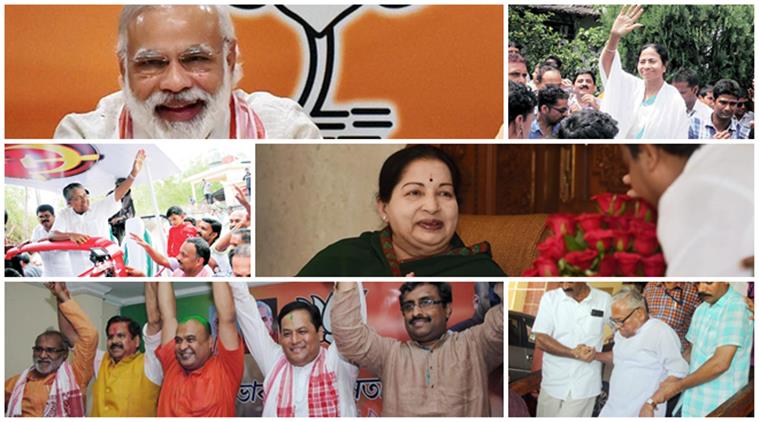- India
- International
Latest round of assembly polls did not see a BJP wave or a decimation of Congress
If we look at the overall figures, the BJP contested 696 assembly seats, won only 64 and had a success rate of 9.1 per cent
 If we take a hard look at the states, starting with Assam, what do we find?
If we take a hard look at the states, starting with Assam, what do we find?
Objective realities, often based on subjective papering over of hard truths, are a part of the media-saturated universe we live in. The elections in five states of the country are no exception to this. But the myths must be cleared.
The first myth is the projection of a BJP wave sweeping the country. If we look at the overall figures, the BJP contested 696 assembly seats, won only 64 and had a success rate of 9.1 per cent. This was to be expected as in most of these states the BJP hardly exists. In comparison, the Left contested 484 seats and won 124, with a success rate of 27.4 per cent, while the Congress contested 363 seats, won 115 and had a success rate of 31.6 per cent. If we look at the impact on different states, if the polarisation of different sections of society brought the BJP to power in Assam, reaction to it brought the Left Democratic Front to office in Kerala. In Tamil Nadu and West Bengal, regional parties won the elections. The BJP was confined to three seats in West Bengal and forfeited its deposits in most of the seats in Tamil Nadu.
If we take a hard look at the states, starting with Assam, what do we find? During the 2014 general election that brought Narendra Modi to power, the BJP garnered 36.6 per cent of the vote. In 2016, the percentage has gone down to 29.5 per cent. In comparison, in Kerala, the LDF increased its tally from 40 per cent of its vote share in 2014 to 42.6 per cent in the current assembly elections, while in West Bengal, the TMC rose from 36.6 per cent to 44.9 per cent and the AIADMK in Tamil Nadu declined from 44.3 per cent to 40.8 per cent on account of incumbency. Given this reality, one finds that the Congress improved its tally in Assam from 29.5 per cent to 31 per cent despite incumbency, in Tamil Nadu, it rose from 4.3 per cent to 6.2 per cent and even in West Bengal from 9.6 per cent to 12.3 per cent. In both states, the BJP’s vote share fell — from 16.8 per cent to 10.2 per cent in West Bengal and from 5.5 per cent to 2.8 per cent in Tamil Nadu. In Kerala, despite its alliance with the BDJS, the BJP only marginally increased its vote share from 10.3 per cent to 10.7 per cent between the 2014 and 2016 elections.
[related-post]
The second myth is of a Congress-CPM alliance imposed from above. The people of Bengal feared a violent election with mass rigging like in 1972, when the CPM had to sit out of the assembly. This time a repeat of that was successfully avoided by listening to the ground-level cadre and it was the seat adjustment with the Congress, RJD, JD(U) and the parties of the Left that isolated the TMC and prevented a wholesale rigging of elections and also gave these parties a chance to show their strength and bring their ideology to the masses. True, in terms of seats and vote percentages, the Congress appears to have done better than the Left, but the significance of the capacity to hold this election in peace was definitely a positive factor which won the people over to the idea, as was evident from the mass participation witnessed in the campaign.
The most significant victory of the Left has been in East Midnapore, where working class strongholds had been attacked, terrorised and the trade unions drawn to the All India Trinamul Trade Union Congress from the CITU. Here, in Haldia, the CPM candidate won with a huge margin of 21,493 votes; in nearby Panskura East, the CPM candidate won with a margin of 5,000 votes, while the CPI defeated the TMC narrowly in Tamluk. This was an area not far from Singur, where the TMC had wiped out the Left electorally. This victory reflects both a resurgent CPM and other parties of the Left.

The third myth that needs demolishing is that the Bengal adjustment affected the Left negatively in Kerala. Muslims and Christians, the mainstay of the UDF, shifted to the LDF seeing both its image in Kerala and its capacity to offer the most effective defence against the Sangh Parivar all over the country.
(This article first appeared in the print edition under the headline ‘Myth and poll reality’)
EXPRESS OPINION
More Explained
Apr 26: Latest News
- 01
- 02
- 03
- 04
- 05










































